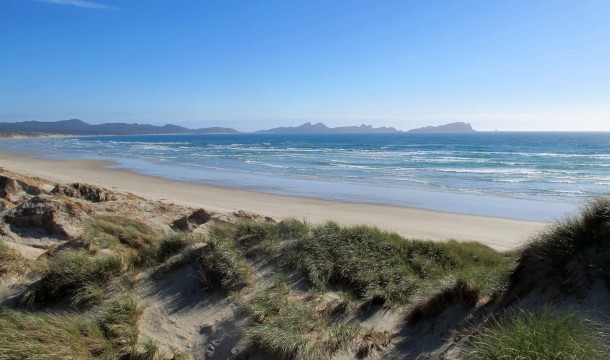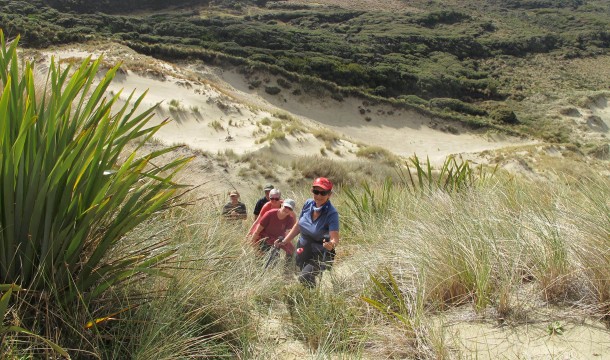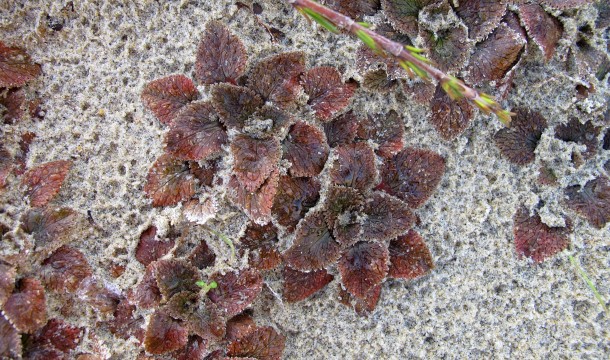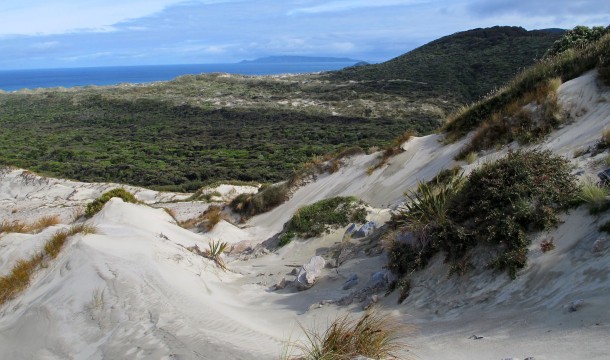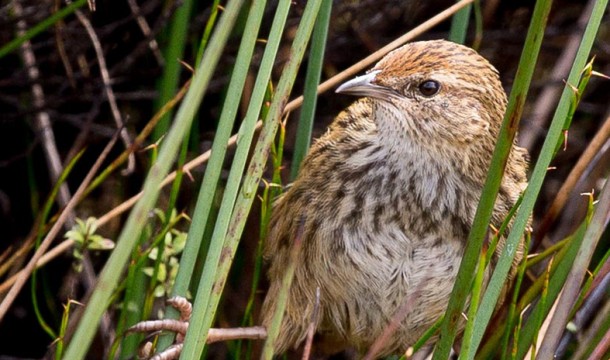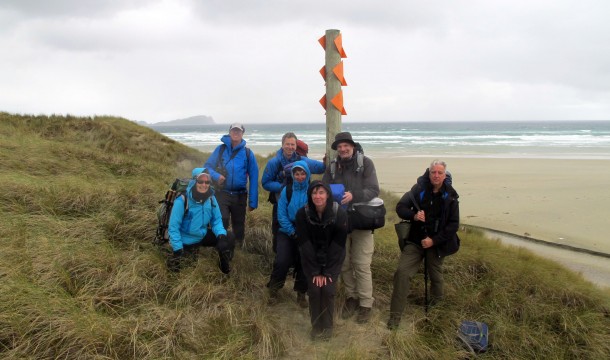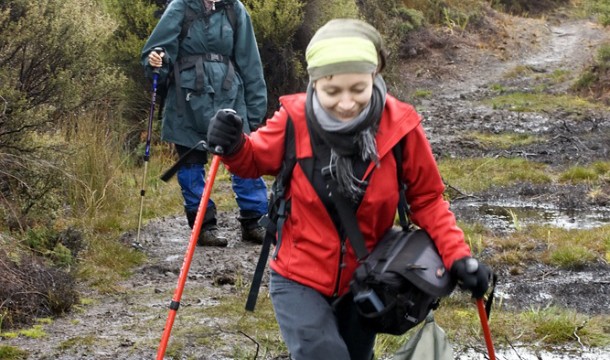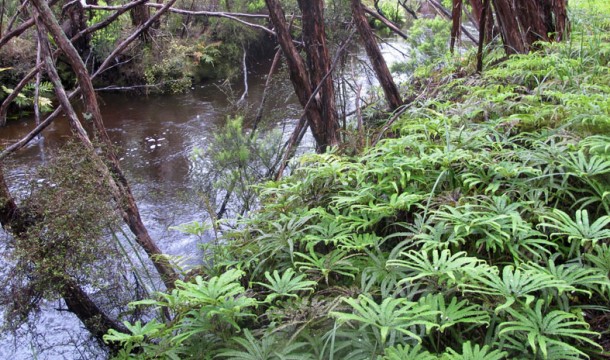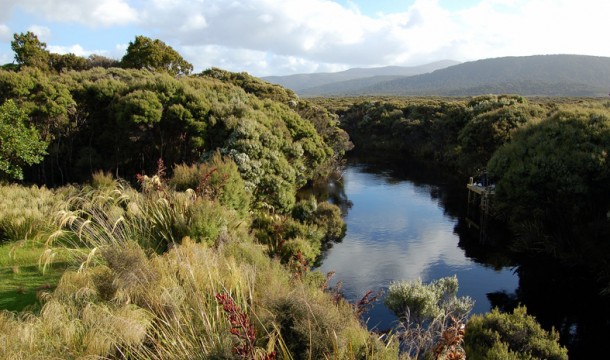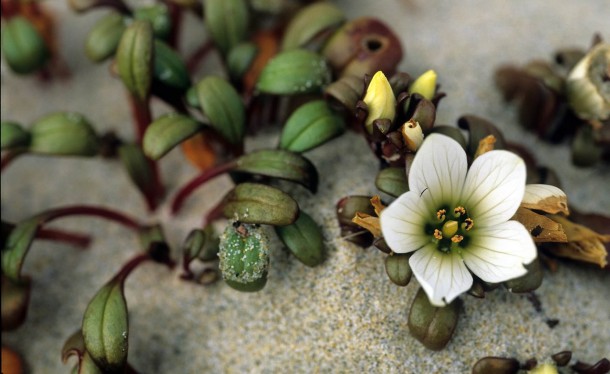Trip Details
More chances to glimpse a kiwi in the wild, explore the spectacular dune environment and wild west coast beach and learn about the natural history and early European history of the area… View an array of ecosystems and wilderness habitats, from east to west coast and across Stewart Island's interior. Enjoy a variety of native and endemic birds and plants, including orchids in season. Experience a stay in a backcountry hut!
This trip is similar to the Kiwi Journey - Fly In / Boat Out option, except it offers a two night stay at Mason Bay, providing more time to soak in this spectacular wilderness environment.
The middle section of Stewart Island from west to east coast comprises: Mason Bay, the Freshwater Flats / Freshwater Valley and Paterson Inlet.
Mason Bay has approximately 14 kms (9 miles) of curved beach, one of the most extensive natural sand dune systems in New Zealand with native coastal plants, some sea and shore birds and a population of kiwi. A great place to go kiwi spotting, enjoy the stunning seascape, watch the surface crash on the beach and feel at one with nature!
Coastal forest, tussock, grasses and scrub surround Mason Bay. Further inland, the surrounding northern and southern hills slope down to an extensive wetland area - the Freshwater Flats. A multitude of creeks that run through the flats feed water into Freshwater River. The river meanders down to its estuary at the start of Paterson Inlet, releasing tannin stained water and silt. The changing habitat, allows a variety of native and endemic birds and plants to exist in the area.
Our trips provide an opportunity to discover kiwi habitat, listen to kiwi calling in the night and with some luck, actually seeing a kiwi. Our success rate for sighting kiwi is about 90%, with 80% seen during the daytime. Kiwi are wild birds and sightings are not guaranteed. It is a privilege to see a kiwi, an experience that many clients never forget! Learn more about kiwi.
Important:
- Our trip times are dependent on daylight hours and high tides for boat trips to / from Freshwater River and low tides for plane access to Mason Bay. Weather is always an important consideration.
- Our day to day itinerary may vary due to weather / client preferences / aspects of nature.
Important: From 15th December 2021, all persons aged 12 years must be fully vaccinated against COVID-19 to stay in Department of Conservation huts and campgrounds. Vaccine passes must be presented to Department of Conservation wardens at these facilities.
LOCATION
Mason Bay and the Freshwater Valley, Rakiura National Park, Stewart Island.
ACCOMMODATION ON THE HIKE
We stay at Mason Bay Hut, which is operated by the Department of Conservation. Facilities are shared with other independent hikers.
Mason Bay Hut does not have a hut booking system. In the event that the hut is full, we have stored tents and sleeping mats for our clients at Mason Bay.
Facilities at the hut include: Sleeping area, separated from kitchen/communal area. The sleeping area is partitioned into three areas, two with 4 bunks each, and one with 12 bunks. The bunks have mattresses. The kitchen has work benches, sinks with cold running water, tables and seating. There is an outside washbasin with cold running water and long drop toilets.
FOOD ON OUR TRIP
We provide healthy meals and snacks (plus the sweet things too), with local seafood where possible. We cater for most dietary requirements.
Meals on our trips include:
Day 1: Lunch, pre-dinner snacks, dinner, hot drinks. Snacks during the day.
Day 2: Breakfast, lunch, pre-dinner snacks, hot drinks. Snacks during the day.
Day 3: Breakfast, lunch, hot drinks. Snacks during the day.
Meal arrangements can vary depending on the timing of our trips.
WEAR AND BRING
We recommend a 45 litre backpack with your personal belongings, light sleeping bag and space for food and snacks. See: Wear and Bring.
We operate an Outdoor Shop (Gear Hire / Purchases).
PACKAGE OPTION
Contact us for customised packages to include travel to and from Stewart Island by ferry or plane and accommodation before and / or after your guided walk.
OTHER RECOMMENDED TOURS
To appreciate the diversity that Stewart Island has to offer, we recommend that you come on the following tour:
BIRDS SEEN
Some commonly seen birds include:
Land birds: Kiwi, Stewart Island robin, Stewart Island fern bird, New Zealand pipit, tui, bellbird, South Island tomtit, fantail, grey warbler, red-crowned parakeet, wood pigeon, kingfisher, brown creeper, Australasian harrier, skylark, chaffinch, dunnock.
Sea birds: Little blue penguins.
Shore birds: Black-backed gull, red-billed gull, variable oystercatcher, banded dotterel, Stewart Island shag, pied shag, white-fronted tern, black swan.
Note: Southern New Zealand dotterel are seen on some trips.
FLORA
The flora is varied and includes podocarps on the slopes of the Freshwater Valley, manuka, wetland plants including mosses and lichen, tussock, scrub, flax, coastal and dune plants and a variety of orchid species.
"Thank you so much for the Ruggedy Range experience! From jumping in the puddles and the mud to climbing dunes and seeing kiwi - we loved every minute..."
Itinerary
-
Day prior to your hike
Meet at the Ruggedy Range™ Booking Office for our trip briefing.
This is an opportunity to meet your guide and other participants. We provide some general information about your hike, ensure you have the right gear for the trip, inform you about what is involved and answer any questions. The trip briefing is a mandatory part of our tour, for approximately 1.5 hours and generally held the day prior to your tour from 5.00 to 7.00 pm.
-
Day 1
Meet with your guide to check in for your flight to Mason Bay.
Enjoy an exhilarating, scenic flight across to Mason Bay (10 - 15 minutes). Take in stunning views of Paterson Inlet, the winding Freshwater River, wetland dunes and Mason Bay. Land on the spectacular beach at Mason Bay.
We make our way to Mason Bay Hut across the dunes.
Today, we explore the surrounding area, take time to watch birds and botanise. We visit the nearby historic farmhouse and hunters camp.
In the evening we search for kiwi and view the southern stars on clear days.
-
Day 2
A day to explore the dunes and beach environment and search for kiwi in the evening.
After breakfast we walk up Big Sandhill 156 meters (511 ft) in the morning, to get views across Mason Bay and Freshwater Flats. We explore the extensive, classic dune environment, one of the least modified in New Zealand. This is a good area for botanising and photography with an opportunity to see other native birds.
After lunch we spend the afternoon on the beach, time and tides permitting, we explore the beach environment. The southern New Zealand dotterel, a wading bird is one of our rare birds and may occasionally be seen along the beach (subject to time of year) as well as banded dotterel, variable oystercatchers and gulls.
Depending on whether we have already seen a kiwi and subject to client preference we take time to go spotting kiwi again or we may watch the sunset over the horizon and if the day is clear, view the brilliant spectacle of the southern hemisphere stars and breathtaking Milky Way.
-
Day 3
Depart early morning to hike and discover birds and plants along the Freshwater Flats. At Freshwater Landing we take our water taxi to Golden Bay Wharf.
We hike of 15.5 km (10 miles) along Freshwater Flats to Freshwater Landing, over rough ground, through tussock fields, manuka scrub and board walked wetland, about 4 - 6 hours. We take in the birdlife along the way, including Stewart Island robin and fernbirds, flora and orchids in season. There is also evidence of kiwi to mull over and occasionally we actually see a kiwi in the daytime!
At Freshwater Landing, we take our water taxi ride down the winding primeval Freshwater River, richly stained by tannin, flanked by manuka (tea tree), ferns and mosses. The river exits into Paterson Inlet a vast area surrounded by a bush-clad shoreline. Look out for penguins on your travels.
Arrive at Golden Bay Wharf about 45 minutes later, where we assist you with transfers to Oban, Halfmoon Bay.
Pricing & Info
- Adult
NZ $1,500.00 per person
- Child
NZ $1,250.00 per person
- Includes
Trip briefing, guided hike, flight to Mason Bay, water taxi from Freshwater River, transfer from Golden Bay Wharf, meals, snacks, hot drinks, hut/camp fees, use of tent/sleeping mats if required, use eating and cooking equipment, Department of Conservation fees, admin costs.
- Min Persons
6 persons
Important: If your booking is for less than the minimum, check to see if we have achieved the minimum or, we can reserve spaces, whilst we await further bookings.
- Max Persons
8 persons
- Duration
3 days + 2 nights
- Distance
Day 1: Approx. 10 kms (6 miles) around Mason Bay and 3 kms (1 mile) for kiwi spotting.
Day 2: Approx. 10 to 15 kms (6 to 9 miles), subject to activity, around Mason Bay beach and dunes. Additional 3 kms (1 mile) for kiwi spotting.
Day 3: 15.5 kms (10 miles) to Freshwater Landing. Additional 3 kms (1 mile) for kiwi spotting.Important:
a) Kiwi spotting is optional for every night and subject to what we have seen. Please remember the guide also needs some rest!
b) Only day gear is carried for most of Day 1 and all of Day 2.- Terrain
Flat except for dunes. Includes, dunes, beach, bare track, some boardwalk, large sections of mud and tree roots.
Track conditions are subject to change from dry to wet periods, with occasional flooding in the wetland area.- Time
All trip times are dependent on tides - which vary day to day.
Day 1: Depart approx. early morning.
Day 3: Return approx. late afternoon/early evening.- Start/End
Ruggedy Range™ Booking Office
- Suitable for
Good fitness essential. This is an active trip, with early morning start and late night finish.
Not suitable for children below the age of 12 years.
Departure Dates
Additional dates (including off-season) may be available subject to feasibility and staff availability. Please contact us.
Dates for the season July 2024 to June 2025 will be published during February 2024.
|
MONTH |
DATE |
| OCTOBER 2022 | 12th to 14th October 26th to 28th October |
| NOVEMBER 2022 | 10th to 12th November 25th to 27th November |
| DECEMBER 2022 | 10th to 12th December 24th to 26th December |
| JANUARY 2023 | 9th to 11th January 23rd to 25th January |
| FEBRUARY 2023 | 8th to 10th February 23rd to 25th February |
| MARCH 2023 | 9th to 11th March 24th to 26th March |

